The Creative Process #12 - A Year of Process
One whole year of posts, and getting caught in a web trap.
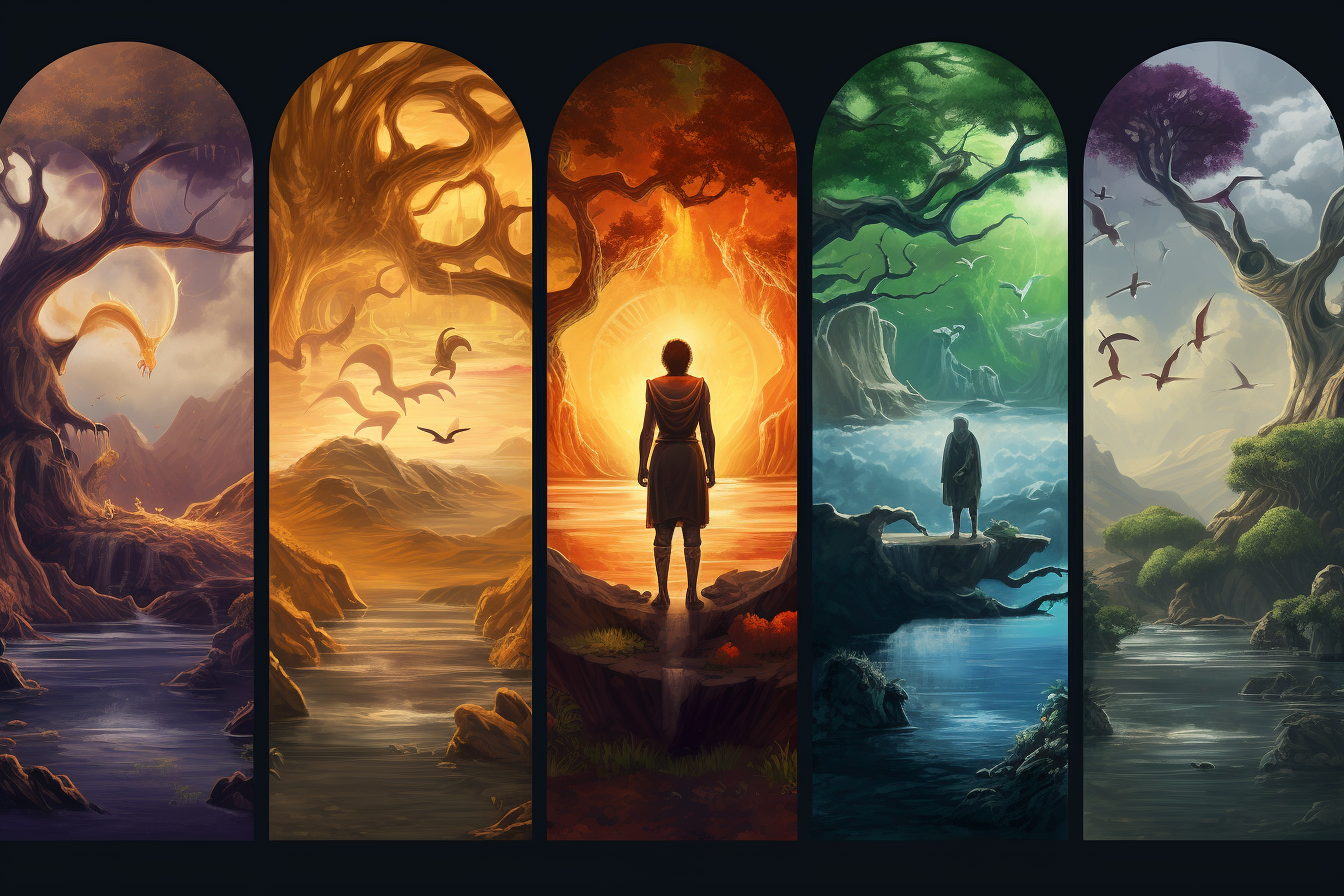
This is my twelfth post, and if my calculations are correct, I post monthly, there are 12 months in a year… carry the two… clear denominators… quotient out the second homology group… I’ve been doing this for a year!
This means not only have I been dedicated to putting out a post every month, but I’ve stuck with my current project, Hand Me Down, for the whole year. After many years of flitting between projects, this has been good training for me. I still intend to submit Hand Me Down to IF Comp 2023 by the end of September, so I need to stick with the project a while yet.
Subscribe to keep getting updates and insights, for free!
Looking back on the year
When I started this newsletter I gave myself six months to evaluate it. I did so in the sixth post, and decided to keep going, even though it had very mild interest from outsiders. Writing monthly was good for me, so I’ve kept at it.
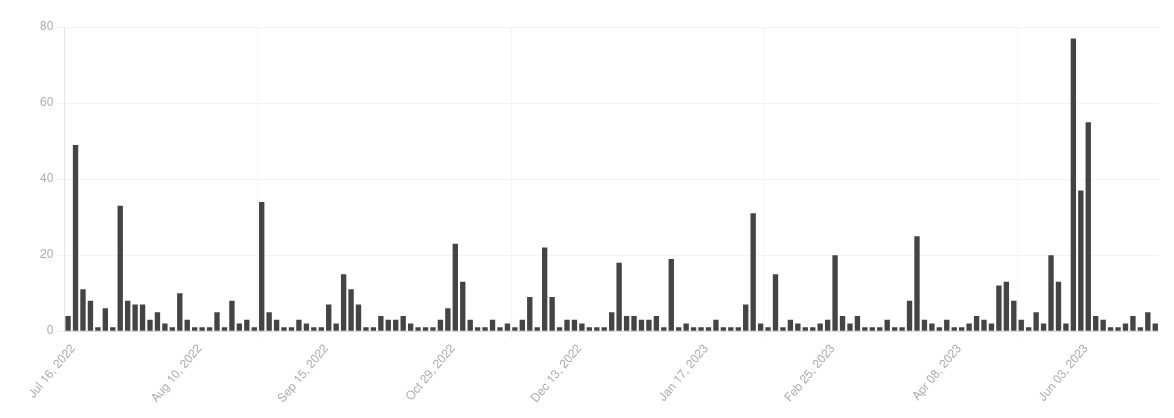
Growth has been very gradual, floating along in a sea of busy optimism. I’m starting to see subscribers I don’t know, which is nice. Hi!
I’ve begun to get into a rhythm with the posts, marking time not by the seasons, but how close to the end of the month I am. It’s a nice reflective process and I hope I’ve shared some insights and funny stories.
In any case, this Substack is going fine and this section has already grown far too indulgent! Let’s talk about disaster and woe!
Disaster and woe - Web edition
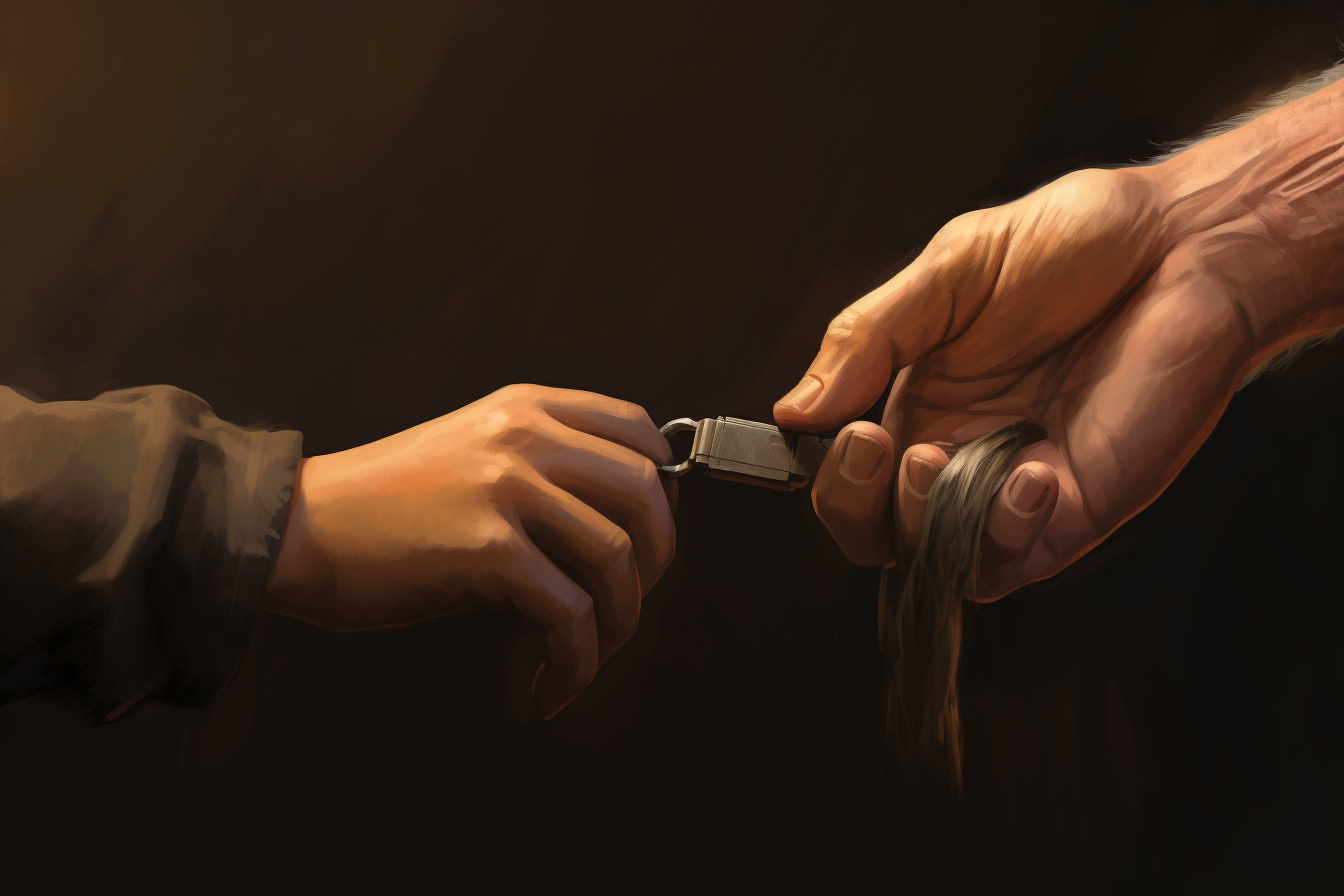
To set the scene, I have to describe the overall structure of Hand Me Down. It’s a game about fatherhood, but also creativity, especially in interactive fiction. The crux of the game is that a father works for many years on a game he intends to give to his daughter on her 16th birthday. As time goes on, this plan becomes unrealistic.
He writes the game in TADS 3, a language that was popular for interactive fiction in the early 2000s. Over time, it lost ground to Inform 7, and eventually Twine. It’s still perfectly usable and capable - I’m writing some of my game in it!
To tie into the theme of interactive fiction and the passing of time, the game itself is actually in three parts:
- Introduction: Revealing the basic plot via a very simple, almost straight fiction game in Twine. You can choose your path through it, like a Choose Your Own Adventure, but you can’t fail.
- Main game: A TADS 3 puzzle parser game (eg
OPEN BOX, GET COIN) in the classic 2000s style. Narrative is subdued for more interactivity and exploration. - Finale: A resolution of the story via Twine but using storylets, which is a more modern game mechanic marrying interactivity and fiction better, as seen in games like Fallen London or Citizen Sleeper.
I had this rough idea for a while, but wasn’t sure how to actualize it.
The original idea was a Twine game in the browser, then it would instruct you to go to the game folder and play the TADS 3 game with software that I assume you’ve already installed. At the end of the TADS 3 game, it would instruct you to go to the final Twine game.
This is exceptionally clunky, and prone to error. Especially for anyone reviewing games in the competition that just wants a good time, and not a whole bunch of IT management.
If the introduction and finale are Twine, and those are run in the browser, all I needed was a way to play TADS 3 games in the browser. At the end of the TADS 3 game, I’d just provide a link to the Twine and it’d all be hunky dory.
TADS 3 natively outputs in HTML, so that’s easy. And it turns out there is a way to play TADS 3 games in the browser using Parchment. I used this combination for my alpha test last month and it went pretty well.
So then, the dark realization.
TADS 3 is a compiled language. You push the source code through the compiler and it gives you a game you can play in an interpreter anywhere. An interpreter takes the game code and makes it run. Parchment appears to supply this.
Historically, interpreters would be run in a terminal without all the fancy graphics. This is the point of interactive fiction! It’s fiction that is interactive and you don’t need graphics! The same TADS 3 game is able to be run on the fancy interpreters and the non-fancy ones.
There is also a way to compile TADS 3 games into a web server, called Web UI, but we will avoid that because no-one really ever used it.
Turns out Parchment is modelled closer on Inform-style games which weren’t HTML, so Parchment runs TADS 3, pretending to be a non-fancy interpreter.
Well okay, so the fonts will look weird. We can fix that with CSS.
Not okay is that any HTML is stripped out. Not retrievable. Just gone. Got an image? Gone. Arranged some text into a list? Gone.
Got a vital link to send your player to the finale?
Gone.
I had a mild panic attack. The game I had been devoting a year to, might be sunk. I couldn’t see a way to change the situation.
All sorts of crazy ideas came up. Doing the finale inside of TADS 3. Paying someone good money to implement HTML TADS 3 in Parchment. Writing my own interpreter in WASM. Having a fourth-wall-breaking moment where I step out and say, “Well there would be a link here, so please go to this.”
All pretty suboptimal or ridiculous.
But luckily I got myself together and found a solution. A horrible, eldritch solution. Infinitely gross and bound to backfire. I’m writing a hacky Javascript which will watch the game, look for magic words and turn those magic words into a HTML link. Hopefully it doesn’t grind the game to a halt after half an hour of text.
I hate it, but at the moment, it’s all I’ve got.
Introductions again and again
Aside from the horror of the last section, work on Hand Me Down is going well. I didn’t like the original introduction that I gave to alpha testers. It had some nice turns of phrases, but didn’t introduce the characters well, and any interactivity was meaningless. I didn’t have experience in writing Twine games, so it probably showed.
Over a few weeks in May and June I rewrote it from scratch. About 4,500 words. Totally different scenes, more presence from the characters, and your interactions brought you through different angles to the introduction.

But it was angry and dark. It made the introduction much more tense, to add to what was already an emotional set of scenes, and then messed with the tone of the main game.
So in the middle of June, I rewrote it again. Lighter, more detailed, and with even better focus on the main characters of the game. Just under 5,200 words this time.
Writing multiple paths to a story is complicated, but I think I’ve done okay. At the moment I feel like it just needs a polish pass, rather than yet another rewrite, which is an important milestone for a writer.
I want to get a lot more progress on the center third of the game before I show it to my testers again. They were so amazing, each one of them. I wouldn’t want to waste their time with baby step increments. But I’m keen to see what they think of the new introduction.
The Storylet Comet

The finale of Hand Me Down is basically a long conversation on a variety of topics. There is a deadline to the conversation, so you need to choose what to focus on, rather than lawnmower your way through conversation options.
I intend to do this with storylets. Storylets are little chunks of story that open or close based on stuff going on during the game. You might build up resources (like trust, humour, or knowledge about a thing), which gives you access to different conversation options. Each conversation might be its own little branching narrative that gives you more resources, and so you continue.
Games like Fallen London use these to formalize certain game loops. You might accumulate rumours that you can trade for a dark secret, and use that dark secret for access to an area, for a chance to progress a quest, and so on.
The structure I’m using for Hand Me Down’s finale is a little like that inaccurate vortex model of the solar system, as popularised by this tweet. Basically there is a core deadline that you are ticking down towards. There are many topics of conversation that you can have opened, and they all swirl around in the general conversation flow. You cannot stop the deadline, but you might be able to aim it.
By making topics of conversation storylets, it allows me to be a bit game-like with the structure, and not have to engineer smooth, long, bifurcating and rejoining conversation trees.
I hope I can nail the finale. It’s so important, but I’m not strong on storylet design. I’ve been reading up on storylet structures in preparation, and await articles in the new Rosebush magazine on this very topic.
A Clash on AI Art
As I’ve mentioned in many previous newsletters, I am quite interested in AI art and using AI to augment my own creative projects, and I am conflicted about the morality of their use and existence.
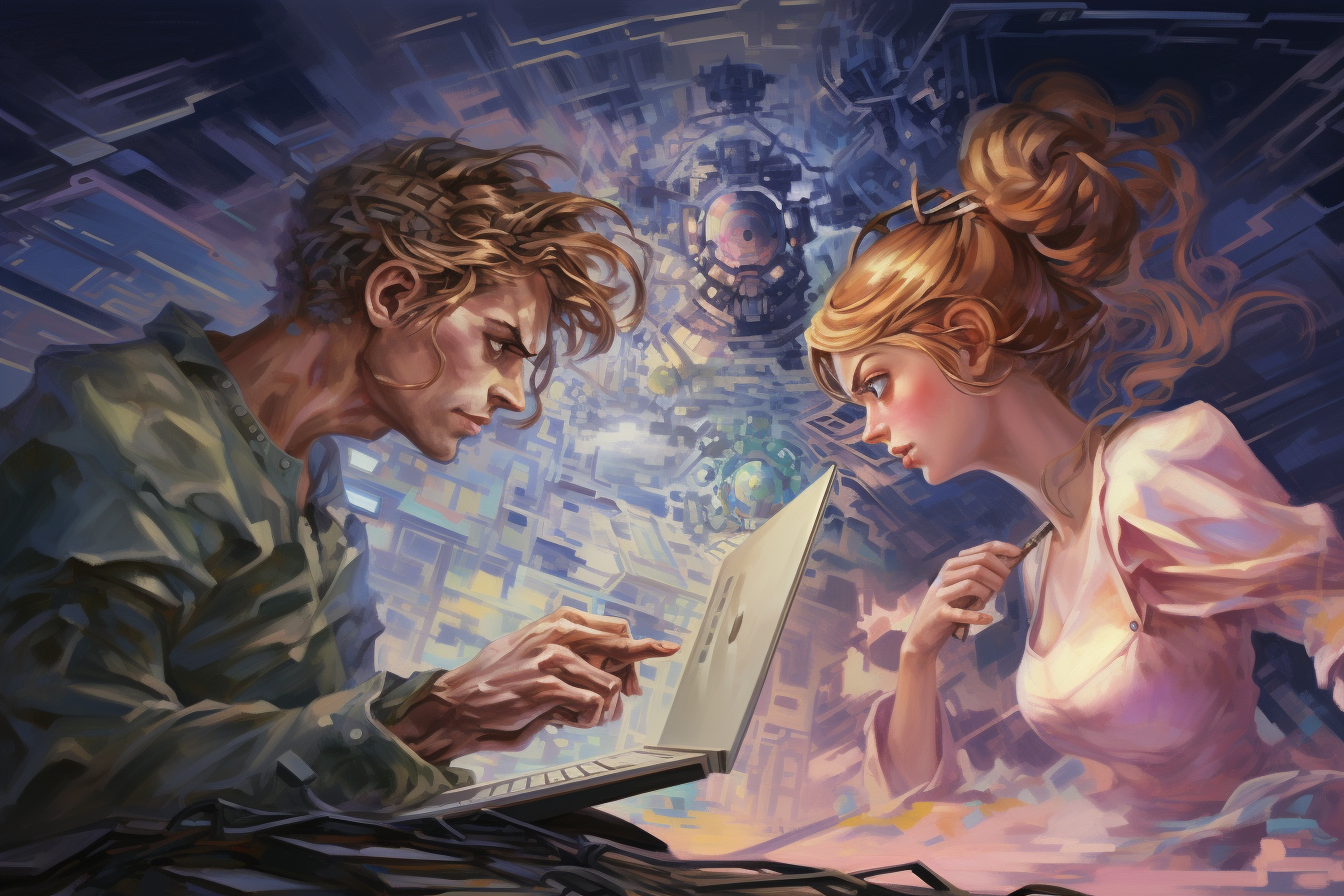
There was a huge discussion on the IF Forum about the use of AI art in interactive fiction. I am sympathetic to the views on both sides, although my personal opinion — currently — is somewhere in the middle. I use AI art in this newsletter because it makes it more interesting and I cannot get an artist to work to my schedule or budget (that is, very late at night, with short timeframes and no money). I’ve commissioned artists before and I love it.
This came at a funny time as well. In the introduction to Hand Me Down there are text messages, and the visual appeal skyrockets if I can put a tiny face next to the messages. I spent a while trying to get Midjourney to match my mind’s eye on the characters.
In the alpha test some of my testers were unfamiliar with interaction fiction, and the wall of text was quite daunting, especially in trying to get a mental map of the world. A picture for each place would have worked, although might have been a tough ask for AI art: I’d need scenes that looked sensible, coherent with the others both artistically and geometrically, reflected the text I wanted and looked interesting. It was suggested that I just drop the requirement to match the text by changing the text to match the image, but that way lies madness. There was discussion on the IF Forum this very day on multimedia in parser games that touches on some of these ideas.
In the end, the limitations on Parchment meant including images is too complicated, so I’ll leave that problem alone.
I don’t know if including any amount of AI art might sink my game’s chance for an audience. While the damage AI art is doing to real artists’ livelihood is real and significant, no-one was up in arms if you use a procedurally-generated anime character creator. Adding real art adds real cost to a thing that already is eating all my time, but not yet my money.
If we treat AI art like blood diamonds, an author can provide a copy of the game untainted by AI art (or at least, an option to turn it off). Is this ethically equivalent? Is a zero-tolerance position maintainable? Feel free to express yourself in the comments section.
I don’t know where I stand. I just want to make cool things for cool people with the limited time I have.
Ars longa, vita brevis
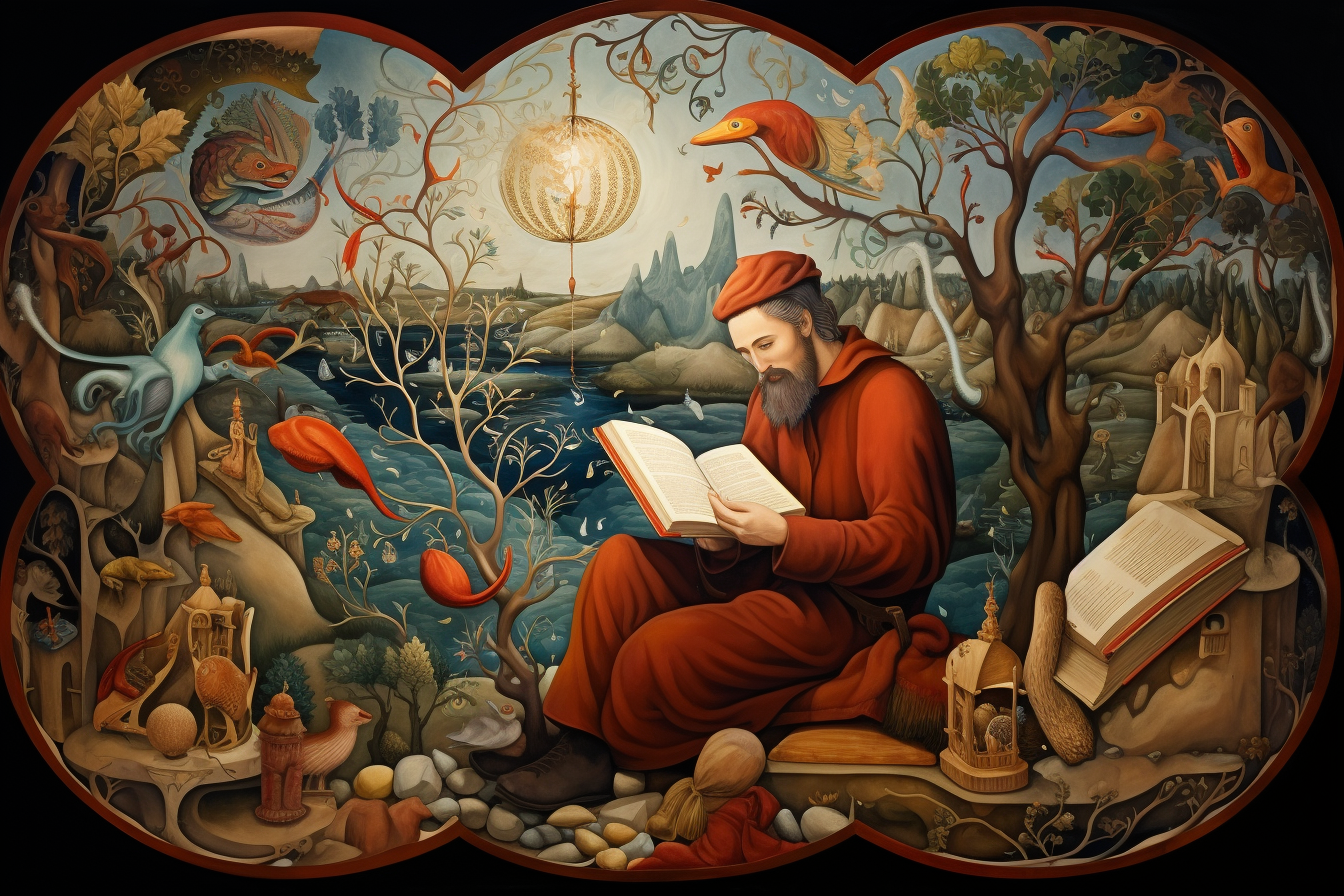
I’m in that phase of the project where there’s only a few months to go to the deadline. I have done a substantial amount of work, but there’s a substantial bit left. Some things are coming together, but I worry that it’s not right, or not enough, or not good enough. I wrestle with doubts as much as I do compilers.
Although I only know me, this appears to be a common affliction in creatives.
I enjoy watching my kids grow. My baby son, whilst not able to get mobile yet, desperately wants to. His fallback is to use me as a mecha platform. He points with a crooked little index finger and says, “There” or “That” and we go there. His primary objective is to go outside and hear the birds, which is a fair goal although risky in winter.
My daughter went from not being able to write much beyond her name at the start of the year, to reading little books and writing cards on her own. She’s keen to express herself, and we write each other notes before bed for reading/writing practice and to bond. She’s endlessly creative with craft, and with gentle guidance, has been learning some cerebral video games like Unpacking and A Little to the Left.
Both kids remind me that life is about learning skills, and using them to express yourself. While some people can do some things better, and some people do something worse, some people are luckier, and some people are harder workers, just worry about your own path and do what you want to do along the way.
So while the deadline looms, I’m learning skills and making the things I want to make. I recognize and encourage others, and try to do the same for myself.
The lyf so short, the craft so long to lerne. — Chaucer
Life is short. Learn more about the craft of creative projects by subscribing to The Creative Process! It’s free!